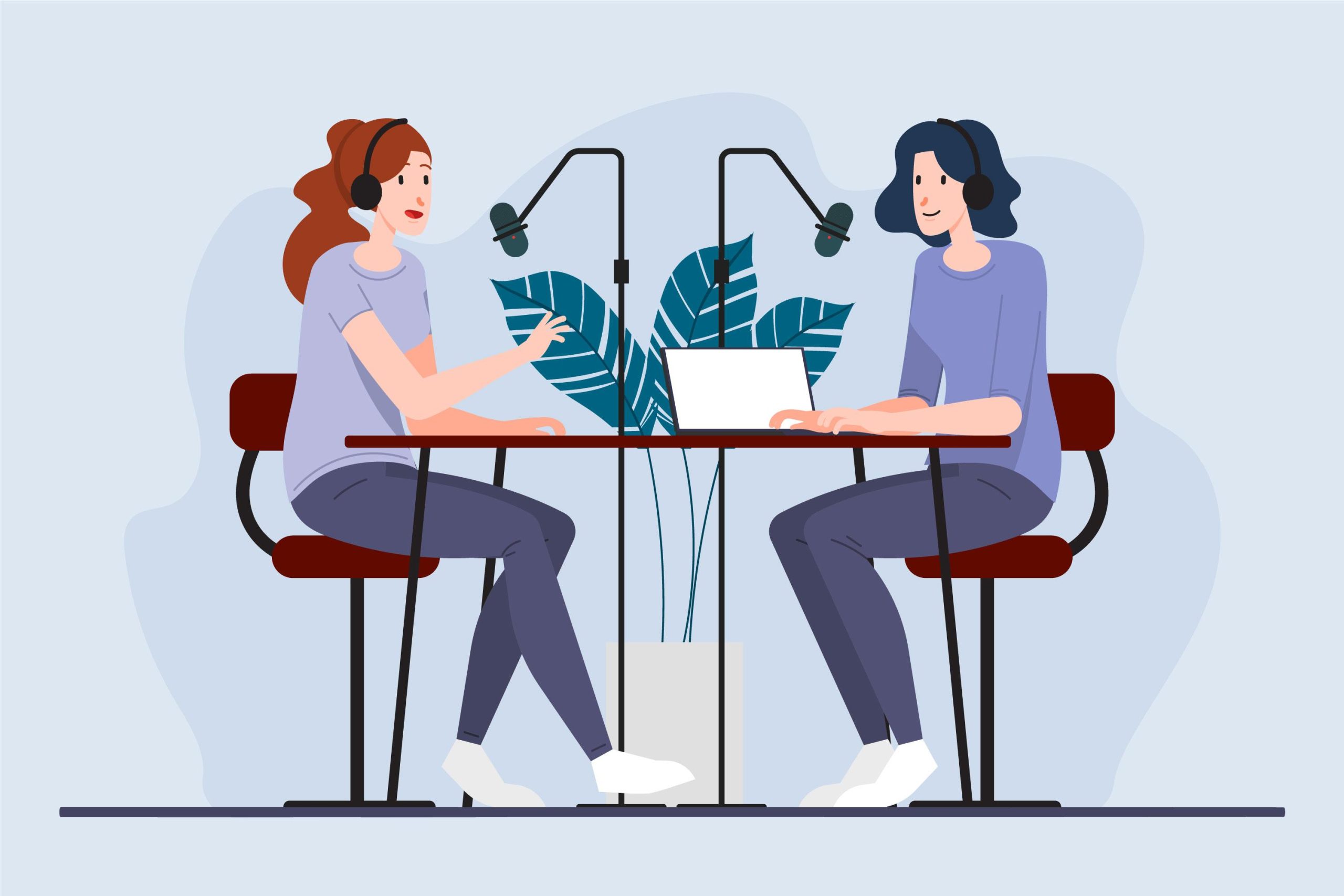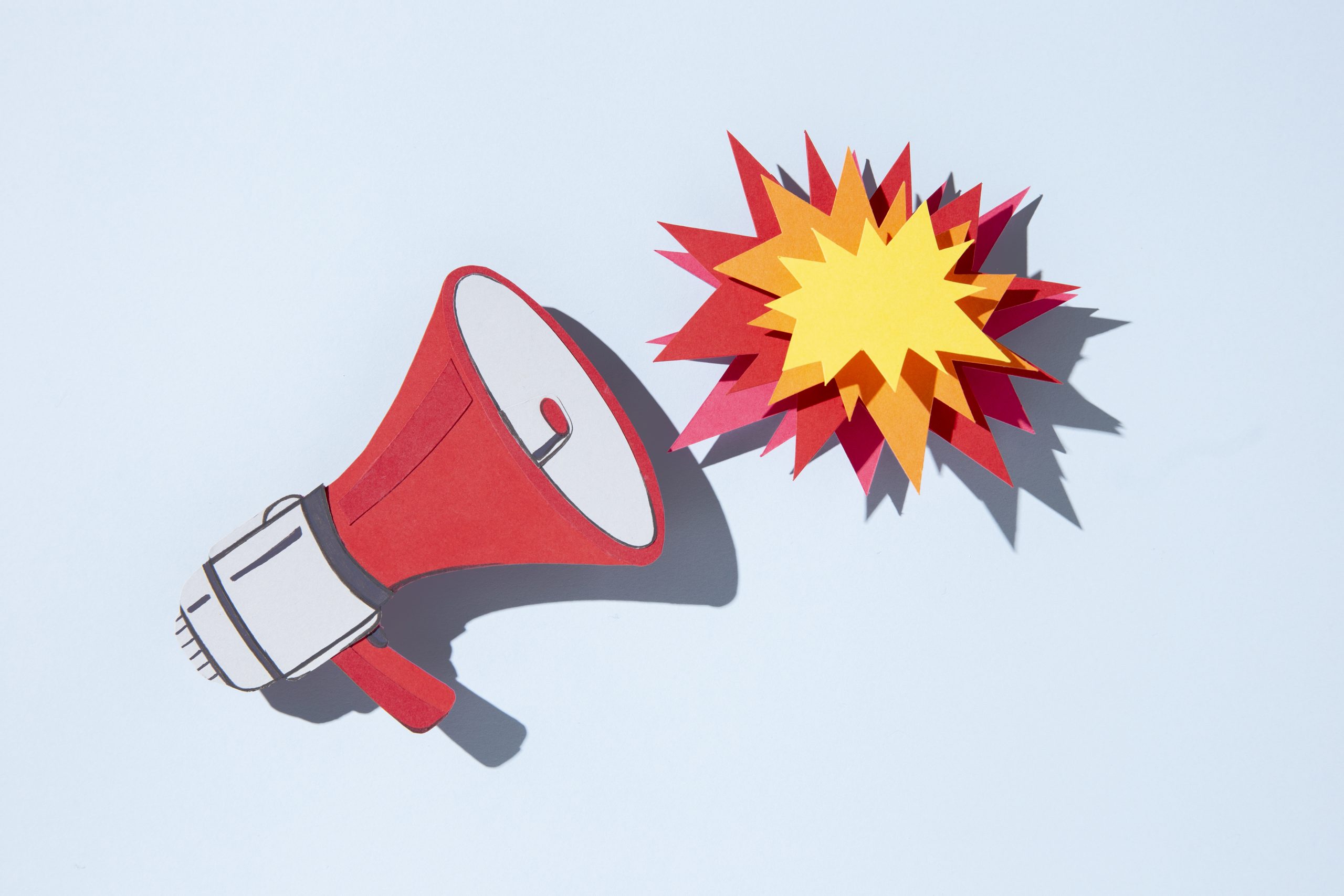How to Do a Live Podcast: Part 1
- Diana Aghumyan
- June 28, 2023
- 10 min read
Podcasts are becoming increasingly popular. Currently, there are 464.7 million podcast listeners worldwide as of 2023. It is predicted that the number of podcast listeners will reach 504.9 million by the end of 2024. There’s a new trend called live podcasts, and they are taking the podcasting industry by storm.
A live podcast is exactly what it sounds like; a podcast that is aired in real-time. Listeners may tune in and communicate with the hosts while the show is being recorded. It’s as if we’ve returned to the early-twentieth-century radio broadcasts but in a more modern way.
There are two types of live podcasts: live audio podcasts and live video podcasts.
Live audio podcasts assume broadcasting in real-time so that everyone tuning in hears what you talk about. This implies there will be no editing or post-production, no cuts, just genuine, more natural communication. Most of the time, you can save your live audio recordings afterward to permanently publish, in which case you may edit and trim them afterward.
Live video podcasts, like live audio podcasts, provide real-time video of your conversation. This may help your audience feel more emotionally connected to you while also creating material that you can easily repurpose later. You could upload your live video podcast to YouTube, or you could create snippets for your Instagram, TikTok, Facebook, or Twitter.
Why Do a Live Podcast?
A live podcast might differ from a regular podcast in a number of ways, depending on your objectives. It can also be a better approach to building a loyal listenership. The best part is that you may broadcast live while also recording your audio locally with the right tool. This will result in high-quality material that can be shared and used afterward. A win-win situation exists!
Below are some of the benefits of starting a live podcast.
Build a Solid Fan Base
Even if you already have a solid fan base, live streaming allows you to target a specific audience that will become a fan of your show if you manage to attract their attention with engaging content. Even though a pre-recorded podcast seems more practical and appealing to the listener, many people like it when the live show has a regular routine.
Create Buzz For An Upcoming Event
Doing a live podcast is great, particularly for a significant occasion or announcement. It is one of the most efficient methods to generate excitement among your audience and anticipation whether you’re going to sell merch or start a new business.
Build a Highly Engaged Community
Live broadcasts provide viewers with a more engaging experience since they may communicate with both you and other people who have tuned in to your live stream. They are participating in the same action as individuals all around the world at the same time, rather than simply using their headphones and clicking play to listen to your podcast episode.
They may send real-time messages if your live stream has a chat and, of course, if you are willing to answer questions. This way, they can feel recognized by you and feel part of your podcast community. They will be more likely to tune in the following week to experience the same excitement.
Your Audience Starts Respecting You More
Even though a live stream podcast is becoming more and more popular, very few podcasters do it. This means that you’re taking on a new, more difficult task and developing a deep connection with your audience.
Your audience will be more willing to support your efforts when you diversify your content. So, if you are serious about live podcasting, do it. You will earn much more respect from your audience.
Allows Creators to Have An Exciting Experience
Knowing that you should be fully present during the live broadcast and there will be many people watching you gives one an adrenaline boost.
Since you can’t edit away “ums” or awkward pauses, you will have to think quickly, which will also greatly improve your live-stream skills. You cannot remove any errors or make other changes. You’ll thus learn how to avoid them or how to handle them politely.
6 Types Of a Live Podcast
The podcasting industry is quite broad and varied. You’ll need to decide on the podcast format before going live with the first episode.
Below are the main types of live podcasting you should take into consideration.
1. Interview
One of the oldest podcasting formats is the interview. Often, there are one or more regular hosts and many guests. This format assumes having a central subject that connects everyone together. If your podcast is about traveling, for instance, then your guests should relate to traveling at some point, whether they are travel agents, travelers, or YouTubers doing different travel vlogs.

2. Customer Interview/Testimonial
This format can be used as a powerful marketing tool. Interviewing customers and collecting testimonials can help you convince your audience of the worth of your products/services. You should be careful not to appear overly “salesy” when creating this kind of podcast.
Instead, focus mostly on the accomplishments of your customers, emphasizing how they used your product and what kind of experience they had while using your products/services.
3. Monologue
The monologue format, sometimes referred to as a “solo cast,” is mostly about talking about something important to you. These talks are usually based on your own experiences and recommendations, but they can also include criticism of particular subjects. This kind of podcast helps your listeners get to know you well while also enabling you to feature guests if you want to mix things up.
One of the nicest things about the monologue style is that, regardless of what topic you choose, it may need little to no research if you are using it to portray yourself as an authority.
4. Q&A
The Q&A format typically involves answering your audience’s questions. Such podcasts usually focus on a particular topic. This allows your listeners to ask questions and receive answers from the experts.
The Q&A can also be utilized in a more opinion-based way. In this case, the audience turns to presents for help since they respect and value their viewpoints.
5. News
While it used to be normal practice to turn on the news every night to be informed of the most recent local and international news, nowadays, many homes don’t even have a TV. Podcasts have become a preferred format for getting the most recent news.

This is an excellent format for experts or businesses in a certain field who believe they can regularly deliver accurate updates.
6. Educational Shows
Educational podcasts involve two experienced people who often share their knowledge and opinions about a certain topic. The goal of such educational podcasts is to educate the target audience on new things and let them acquire useful knowledge and skills that they may use in their daily lives.
Conclusion
You already know how beneficial it is to do live podcasting and what the main types of live podcasts are. Read the second part of our guide to learn how to prepare for a live podcast, what equipment you need, and which platforms to use.

SEO Content Writer
Diana Aghumyan
Diana is an experienced creative SEO content writer at SayNine. She is passionate about writing and giving value to people with her articles. Her blogs revolve around advertising, digital marketing, and other similar topics.
